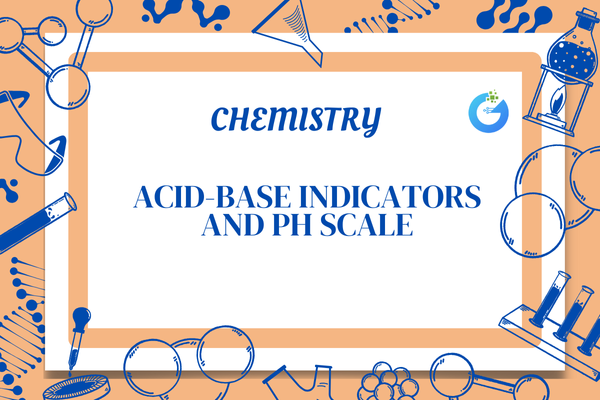Introduction
Have you ever seen milk turn sour, an apple turn brown, or fireworks light up the sky? All these changes are results of chemical reactions! Chemical reactions are happening all around us — sometimes quietly, sometimes dramatically. Understanding them helps us see how substances change and create new materials. Let’s dive into the exciting world of chemical reactions and learn about their different types.
expert-led Chemistry classes – visit our website to learn more
What is a Chemical Reaction?
A chemical reaction is a process in which one or more substances (called reactants) change into one or more new substances (called products). During a chemical reaction, the properties of the original substances change completely. A chemical reaction usually involves breaking bonds between atoms and forming new ones.
Signs of a Chemical Reaction
How do you know if a chemical reaction has taken place? Look for these signs:
- Change in color: Like an iron nail rusting.
- Change in temperature: Heat may be released or absorbed.
- Formation of a gas: Bubbles may appear.
- Formation of a precipitate: A solid may form from a liquid reaction.
- Change in smell: Like food spoiling.
Types of Chemical Reactions
There are several types of chemical reactions, each behaving a little differently. Let’s understand the main types:
Combination Reaction
In a combination reaction, two or more substances combine to form a single new substance.
Example:
Calcium oxide (quicklime) + Water → Calcium hydroxide (slaked lime)
Decomposition Reaction
In a decomposition reaction, a single substance breaks down into two or more simpler substances.
Example:
Heating of ferrous sulfate crystals gives off sulfur dioxide gas and leaves a residue of ferric oxide.
Displacement Reaction
In a displacement reaction, one element replaces another in a compound.
Example:
Zinc + Copper sulfate → Zinc sulfate + Copper
Double Displacement Reaction
In this reaction, two compounds exchange their ions to form two new compounds.
Example:
Sodium sulfate + Barium chloride → Barium sulfate (white precipitate) + Sodium chloride
Exothermic Reaction
These reactions release heat energy during the process.
Example:
Combustion of fuels like petrol.
Endothermic Reaction
These reactions absorb heat from the surroundings.
Example:
Photosynthesis in plants (plants absorb sunlight).
Examples of Chemical Reactions in Daily Life
Chemical reactions aren’t just in laboratories; they are happening around you!
- Cooking: Baking a cake is a chemical reaction.
- Rusting of Iron: A slow reaction with moisture.
- Digestion: Food being broken down in the stomach.
- Photosynthesis: Plants making food with sunlight.
Chemical Equations
Chemical equations show what happens in a chemical reaction using chemical formulas. A balanced chemical equation has the same number of atoms of each element on both sides.
Example:
H₂ + O₂ → H₂O (Unbalanced)
2H₂ + O₂ → 2H₂O (Balanced)
Importance of Balancing Chemical Equations
Balancing chemical equations is important because it follows the Law of Conservation of Mass. This law states that matter cannot be created or destroyed in a chemical reaction.
Chemical Reaction Conditions
Some reactions need special conditions to happen, such as:
- Heat: Decomposition reactions often need heating.
- Light: Photosynthesis needs sunlight.
- Electricity: Electrolysis splits water into hydrogen and oxygen.
Fast and Slow Reactions
- Fast Reactions: Explosions, combustion.
- Slow Reactions: Rusting, curd formation.
Key Vocabulary to Remember
| Word | Meaning |
| Reactants | Starting substances |
| Products | New substances formed |
| Catalyst | Substance that speeds up a reaction |
| Precipitate | Solid formed in a solution |
| Combustion | Burning with oxygen |
Interesting Facts About Chemical Reactions
- The world’s fastest chemical reaction happens in explosives — in less than a microsecond!
- Rusting can take weeks or months, depending on moisture.
- Every second, millions of chemical reactions happen inside our body.
FAQs
What is a simple definition of a chemical reaction?
A chemical reaction is a process where substances change into new substances.
Why do we balance chemical equations?
To obey the Law of Conservation of Mass.
Is burning wood a chemical reaction?
Yes! It’s a combination of combustion and decomposition.
Can a chemical reaction be reversed?
Some can be reversed (like dissolving salt in water), but most cannot.
What is an example of a decomposition reaction?
Heating limestone to make lime.
Why is photosynthesis considered an endothermic reaction?
Because it absorbs sunlight (energy) to make food.
Conclusion
Chemical reactions are an incredible part of nature and human invention. From the food we eat to the fuels we use, chemical reactions shape our lives every moment. By understanding the different types of chemical reactions, we not only do better in science but also appreciate the magical transformations happening around us every day.








